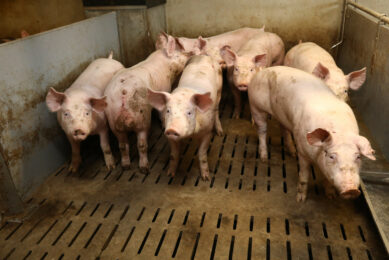French pig industry uses fewer antibiotics

The French pig industry has successfully been able to curb its use of antibiotics. 2 different monitoring systems show a decrease between 2010 and 2013. Here is the latest data.
Anne Hémonic, the French Pig and Pork Institute (IFIP), explained the latest data at the recent Swine Research Days (JRP), held in Paris, France, February 2 and 3, 2016.
Nationwide, 2 complementary tools have been existing to quantify the evolution of antimicrobial use:
- The annual sales monitoring managed by Anses-ANMV – which highlighted a decrease of 22% in exposure of pigs between 2010 and 2013;
- The Inaporc Panel, which measured the antimicrobial use and treatment patterns in a representative samples from farms in 2010 and 2013.
Objectives of the study
The objective of Hémonic’s study is to analyse these latest data from the Inaporc Panel and the evolution of antimicrobial use over 3 years, split out by animal categories and reasons for usage. Thanks to the high participation rate of farmers (75%), veterinarians and feed manufacturers, the study covered a large sample of 157 farms, 148 of which also described the reasons for treatment.
Also interesting: Antibiotic-resistant pigs discovered in UK
The British Animal Plant Health Agency has discovered antibiotic-resistant pigs at three farms. At the same time, Public Health England has announced that it found several resistant bacteria samples in human infections relating to salmonella and E. coli.
Over 3 years the average number of days of treatment significantly decreased by 29% in suckling piglets and by 19% in weaned piglets. In finishing pigs, the drop reached 29% (not significant).
Usage in sows increased
Only usage in sows increased (+17%, not significant), which is probably related to the recent group-housing of pregnant sows. The use of third and fourth generation cephalosporins decreased by 90% in suckling piglets.
Finally, the study helped to provide accurate, reliable and detailed references in terms of antimicrobial use in swine production and reflects the efforts made by the French pork industry.











